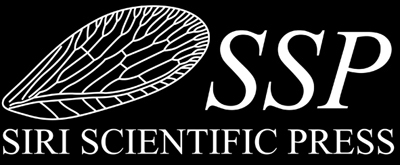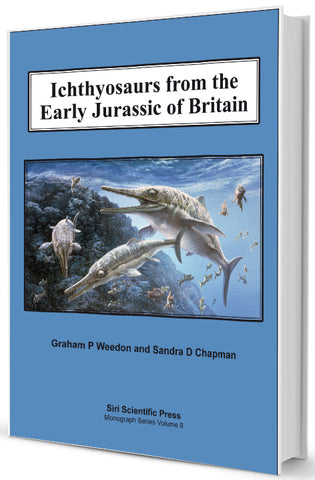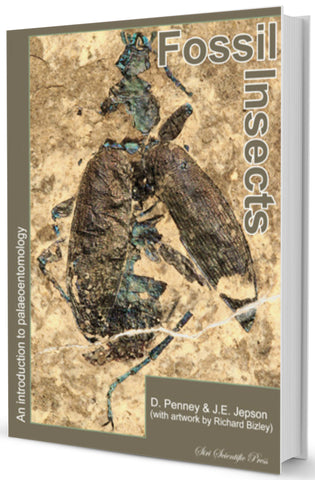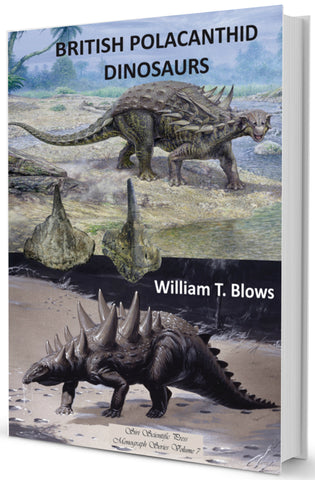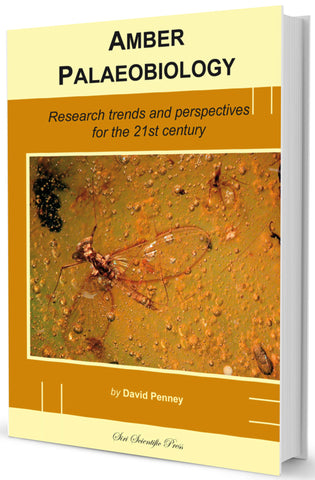
Amber Palaeobiology: Research trends and perspectives for the 21st century
Siri Scientific Press (2016) 978-0-9929979-7-7 RRP £21.00 (2 May, 2016)
128 pp, 210 x 148 mm, soft cover, 62 colour photographs & illustrations
Reviews
Newsletter of the Paleontological Society (Priscum, Fall 2017, page 23): "Amber studies is a niche even in paleontology and when I picked up this book I assumed that it was going to be targeted at that small community of researchers or enthusiastic collectors (with the hope of some neat photos). I am glad I was so wrong! ... The book then gets into the problems of paleotaxonomy and paleoecology in amber-bearing fossils. This is one of the best discussions on bias in the fossil record I have ever read (especially on one type of preservation), and the author has compiled the data and made figures that allow for an easy understanding of the issues. ... This book is definitely THE book to go to if you want to know more about general amber research and amber paleobiology and can be recommended for most audiences (both professional and amateur). The author did a great job of covering a lot of ground in a short amount of pages in a succinct and engaging way."
"Great synthesis of ideas! I was privileged to get an advance copy during the Fossils X3 conference in Edinburgh last week, and have already read it. I could recommend it to anyone interested in insect evolution, amber, palaeontology or natural history in general." Viktor Baranov, Berlin.
Palaeontological Association Newsletter 2017 (95: 102-103, snippets): "The author has two decades of research experience working with amber arthropod fossils so you can expect a strong entomological theme to unite and thread through this book. This is certainly a good starting point considering the high proportion of amber-preserved arthropods when compared to other groups preserved in amber. The book neatly draws together this diverse research area and introduces the key researchers themselves. ... Several important concepts are introduced and explained, many should be familiar to palaeoecologists, but also with some analyses illustrated to give the reader a feel for ‘real’ datasets, and potential issues with the sampling and these analyses. ... I consider this contribution to be well illustrated and clearly written for both the enthusiast and the researcher, and may even help to convince neontologists to consider amber fossils in their work."
From the back cover
Fossils in amber provide a unique insight into the evolutionary history of arthropods (insects, spiders and their relatives), the most diverse and ecologically important group of animals on the planet today. The fossils provide direct evidence of many groups familiar to us now, living alongside extinct forms such as the dinosaurs. Furthermore, the fossils occur in staggering numbers and are represented by an exceptionally high diversity of extinct species. There can be little doubt that we are in a new technological era of research and with new deposits being discovered often there is a constant wealth of new material to work on and new ways in which we can do it. There are many general books on amber, but none of them has focused on what we can actually do with the palaeontological data provided by these remarkable fossils. What can they tell us and how should we utilize them in order to extract the most reliable conclusions about the palaeoecology of the past ecosystems in which the organisms once lived? In this book, Dr David Penney, a world recognised authority on amber fossils, considers these issues based on his two decades of research experience at the cutting edge of amber palaeobiological studies. It should appeal to the general amber enthusiast in providing an appreciation of recent discoveries and also some of the difficulties involved in the study of amber fossils, in addition to upcoming and established amber researchers, in the hope that it may help promote new, more focused palaeobiological studies using amber derived data.
Contents
Palaeodiversity & New Amber Deposits
Newly discovered deposits
Important current research themes (previously known deposits)
The better studied deposits (Burmese, Baltic & Dominican ambers)
Canadian amber
Mexican amber
Fushun amber
Microbes in Amber
New Imaging Techniques
Photomicroscopy
Confocal laser scanning microscopy
Computed tomography
Synchrotron scanning
Computer-generated imagery (CGI animation)
Palaeotaxonomy
Palaeoecology
Quantifying the representative sample
Low taxonomic resolution palaeoecology
High taxonomic resolution palaeoecology
Syninclusions
Combining amber & non-amber fossil data
Concluding thoughts on quantitative palaeoecology
Palaeo/Biogeography
Subfossils in Copal
A proxy for understanding taxonomic bias in amber
DNA
Conclusions
Literature Cited
We Also Recommend
